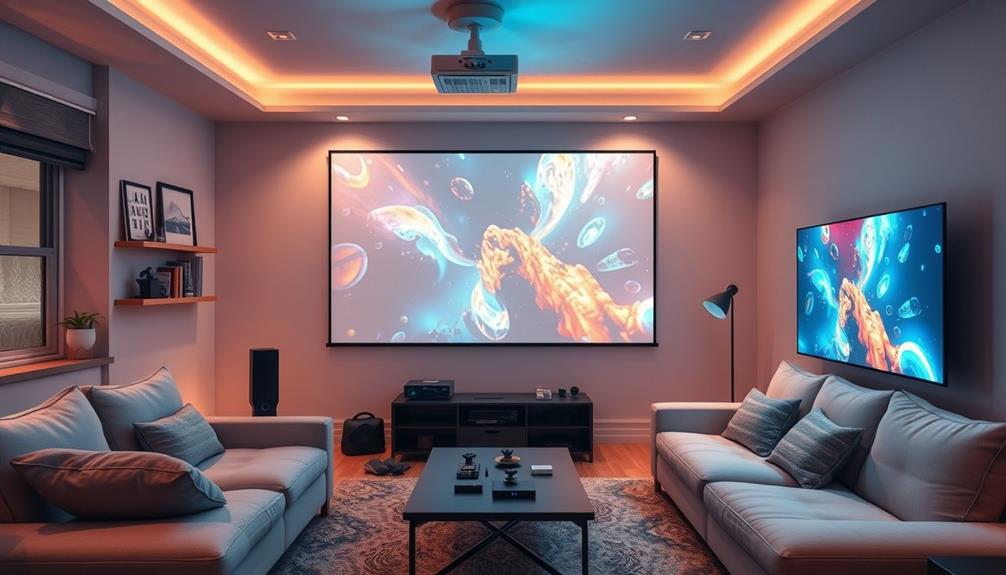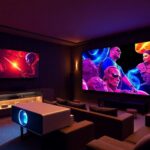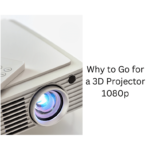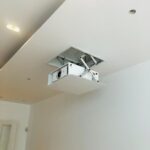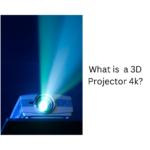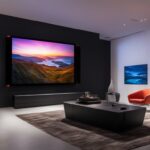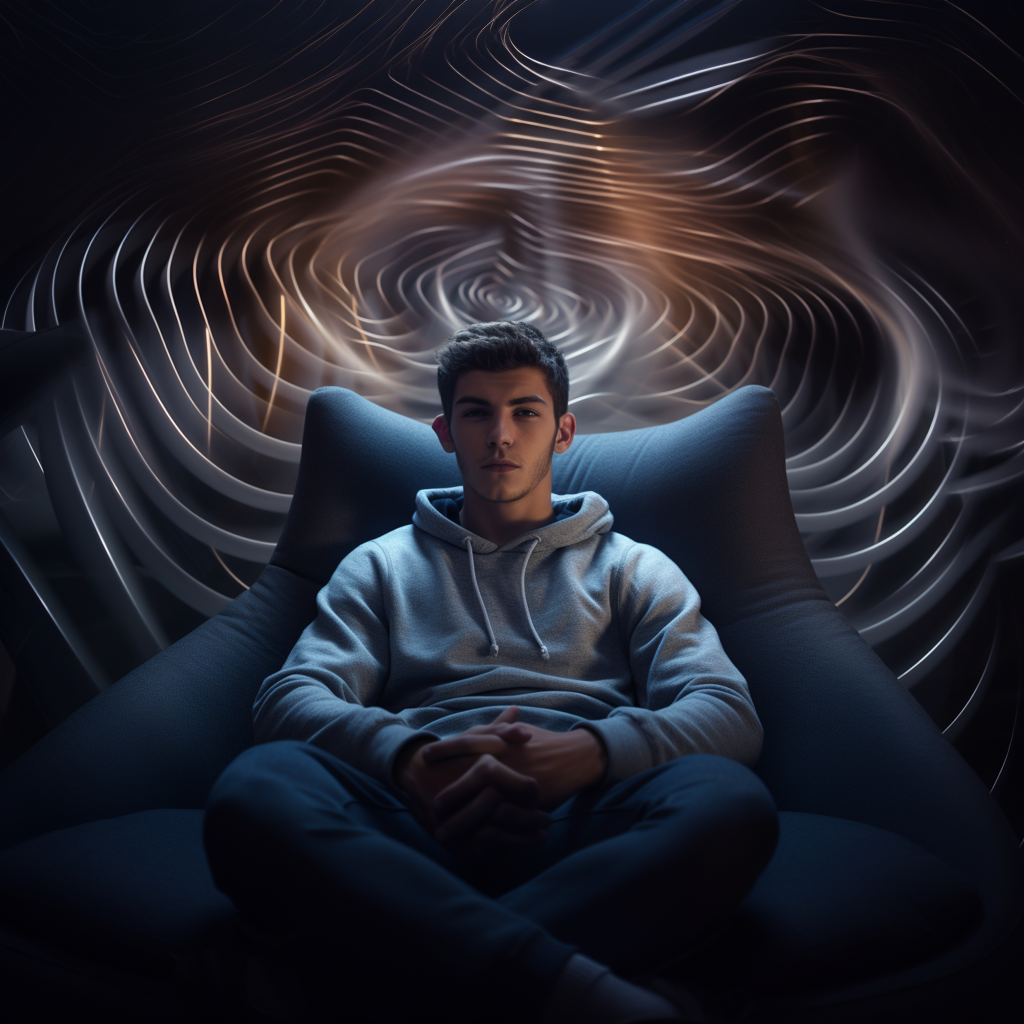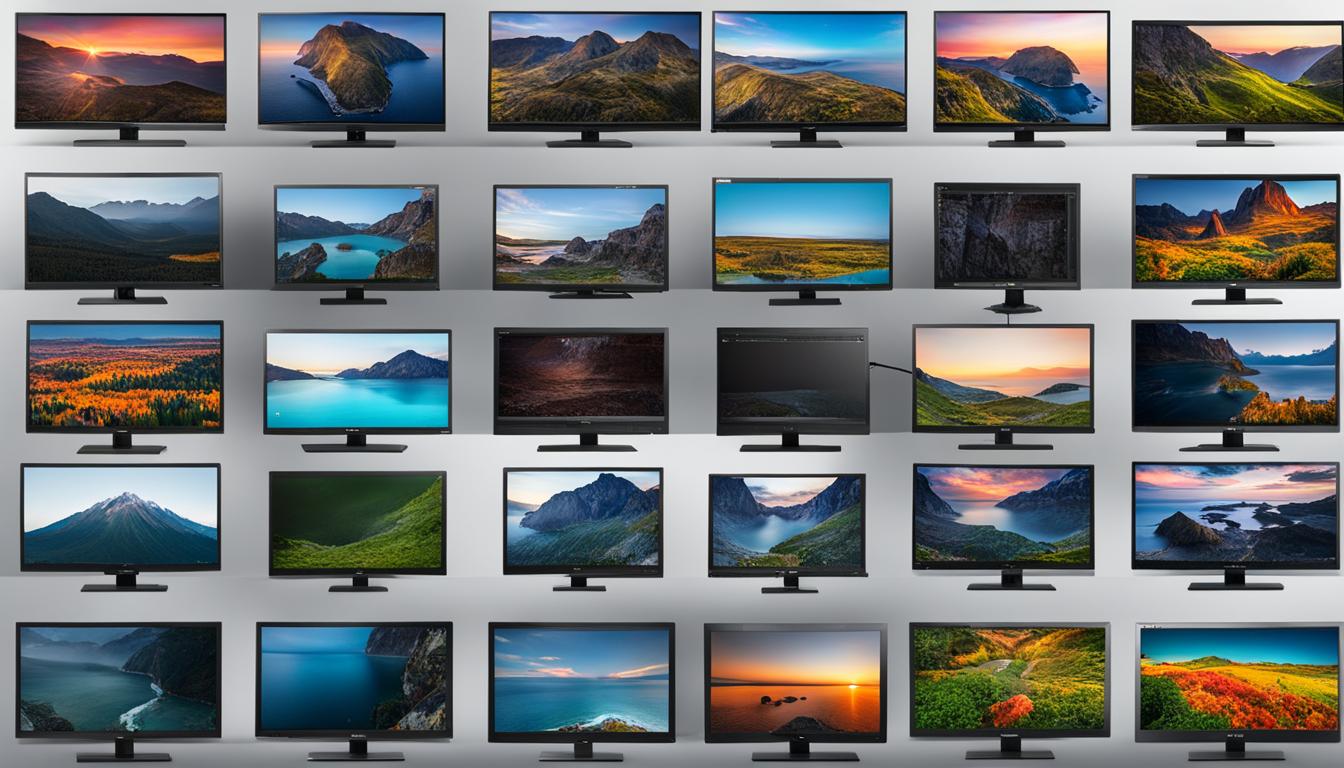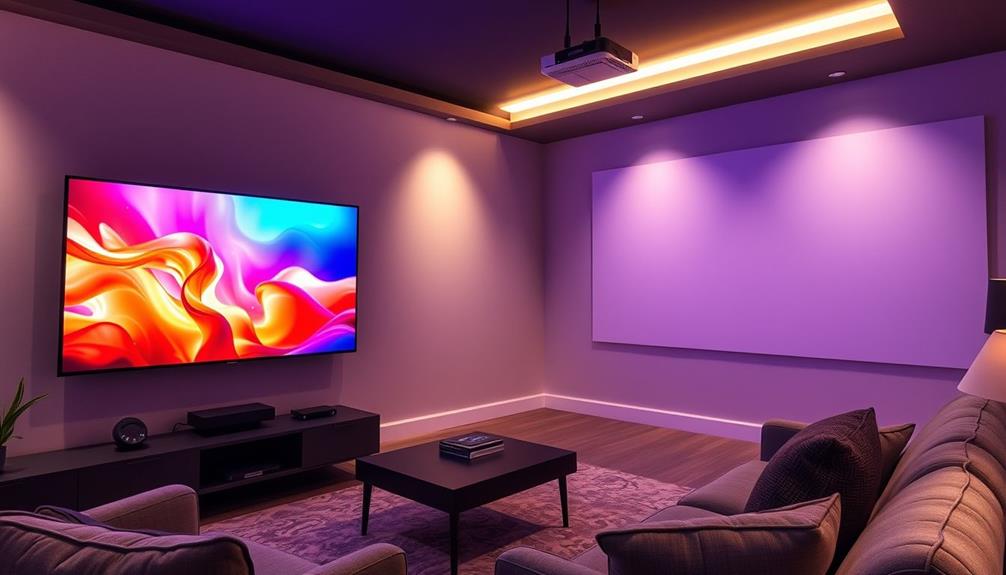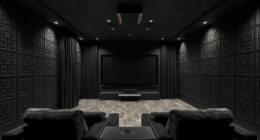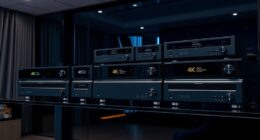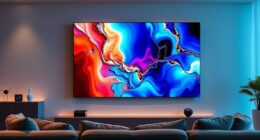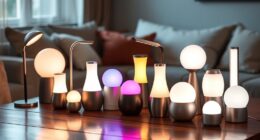If you're considering 3D projection for home use, it can definitely be worth it. 3D projectors offer immersive experiences that bring movies and games to life. With entry-level models around $500, there's a range of options to fit your budget. Popular brands like BenQ and Epson provide models known for superior performance in brightness and depth. Just remember, choosing high-quality glasses and ensuring proper setup can enhance your experience. User satisfaction shows a growing interest in 3D content, suggesting it's not a passing trend. There's plenty more to discover about maximizing your home theater experience.
Key Takeaways
- 3D projectors offer an immersive viewing experience, appealing to home theater enthusiasts and enhancing movie nights.
- High-quality 3D projectors are now more accessible, with entry-level models starting around $500.
- Advancements in technology, such as 4K HDR and laser light sources, significantly improve image quality and vibrancy.
- Proper setup, including screen selection and seating distance, is crucial for optimizing the 3D experience.
- Ongoing demand for 3D content, including new Blu-ray titles, indicates a sustained interest in 3D projection for home use.
Current Value of 3D Projectors
The current value of 3D projectors remains significant, thanks to their immersive viewing experience that many users still cherish.
Even though some might claim that 3D viewing is on the decline, enthusiasts continue to enjoy it as a bonus feature in their projection technology. When you invest in high-quality 3D projectors, like the BenQ HT3550 or Epson 5050UB, you're rewarded with superior 3D and 4K capabilities, sharp images, and minimal ghosting.
Additionally, employing a high-quality headphone amplifier can further enhance the overall audio experience, complementing the visual brilliance of 3D projections. One of the key aspects to reflect upon is brightness. Since projectors typically use 50-66% of their brightness for 3D content, it's essential to match your projector with an appropriate screen size and gain for peak performance.
With many newer models now available at entry-level prices starting around $500, there's never been a better time to explore this engaging technology.
Dedicated fans advocate for the ongoing viability of 3D projectors, and the market reflects this enthusiasm. If you're seeking that good quality immersive experience at home, embracing 3D projection could be a rewarding choice for your entertainment setup.
Projector Comparisons
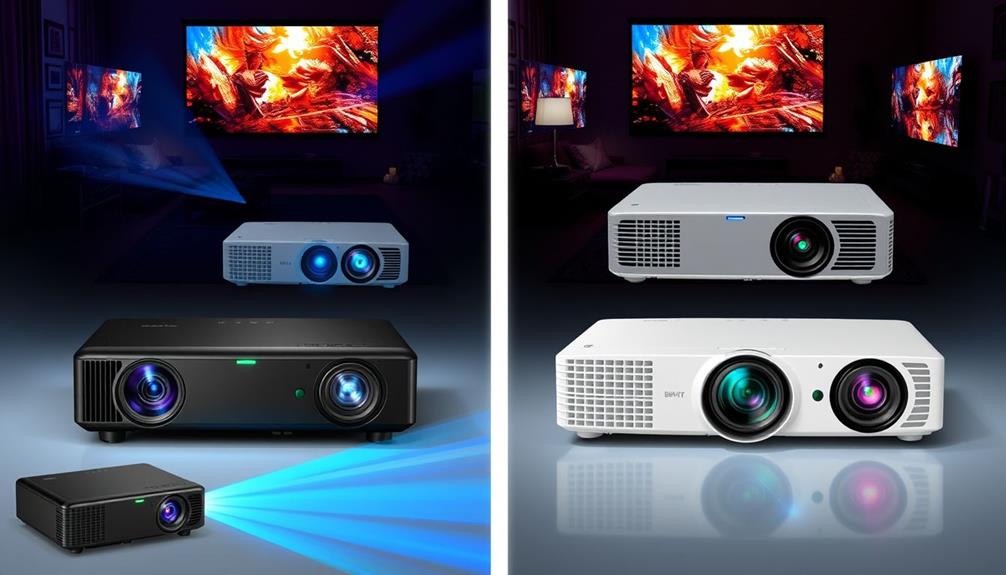
When comparing DLP and Epson projectors, it's clear that Epson often leads in 3D performance with deeper blacks and better contrast.
Additionally, a clean indoor environment can enhance your viewing experience, as air purifiers reduce allergens and harmful particles that may distract you.
However, DLP models like the BenQ HT3550 and Optoma UHD35 can offer sharper images with less crosstalk, though they might falter in 3D viewing.
Don't forget that the quality of your 3D glasses also plays a significant role in your overall experience.
DLP Vs. Epson Projectors
Choosing between DLP and Epson projectors for 3D viewing can greatly impact your home theater experience. Both have their strengths, but understanding them will help you make the right choice.
Additionally, if you're examining different options for aerial perspectives, you might want to explore best countries for pilots as they often have advanced technologies influencing visual experiences.
Here are three key differences to evaluate:
1. Picture Quality: DLP technology, like that in the BenQ HT3550 and Optoma UHD35, offers sharpness and reduced crosstalk, making them a solid option for 3D viewing.
However, Epson projectors, such as the 5050UB, excel in black levels and contrast, enhancing the depth of 3D images.
2. Crosstalk Performance: DLP projectors can experience crosstalk issues, which may be influenced by the quality of your 3D glasses.
In contrast, Epson models generally perform better in minimizing this effect, providing a more immersive experience.
3. Usability Features: Epson projectors come with a motorized lens shift feature, allowing for easier adjustments to achieve ideal viewing angles.
This usability can be a significant advantage during setup.
Ultimately, if you prioritize picture quality and minimal crosstalk, Epson projectors may be the better choice for your 3D viewing needs.
Crosstalk and Glass Quality
Crosstalk can make or break your 3D viewing experience, and understanding how it interacts with glass quality is vital. When you're diving into immersive experiences, the overlap of images seen by each eye—known as crosstalk—can considerably detract from the 3D effect.
Different projectors exhibit varying levels of crosstalk, with some DLP models showing less crosstalk compared to 3LCD projectors. This difference can enhance your overall viewing pleasure. It's important to be cautious of avoiding gold IRA scams when investing in home equipment, as high-pressure sales tactics can lead to poor choices in technology.
The quality of your 3D glasses also plays a vital role in minimizing crosstalk. Higher quality active glasses synchronize better with projectors, which leads to improved brightness and clarity in 3D images.
If you choose lower-quality glasses, you might notice increased crosstalk, especially during certain scenes in films. Opting for projectors with superior black levels and contrast, like those from Epson, can further help reduce crosstalk.
This choice enhances the immersive quality of your 3D viewing experience, making it vital to pair the right projector with high-quality active glasses. By considering these factors, you can truly elevate your at-home 3D movie nights.
User Experiences With 3D
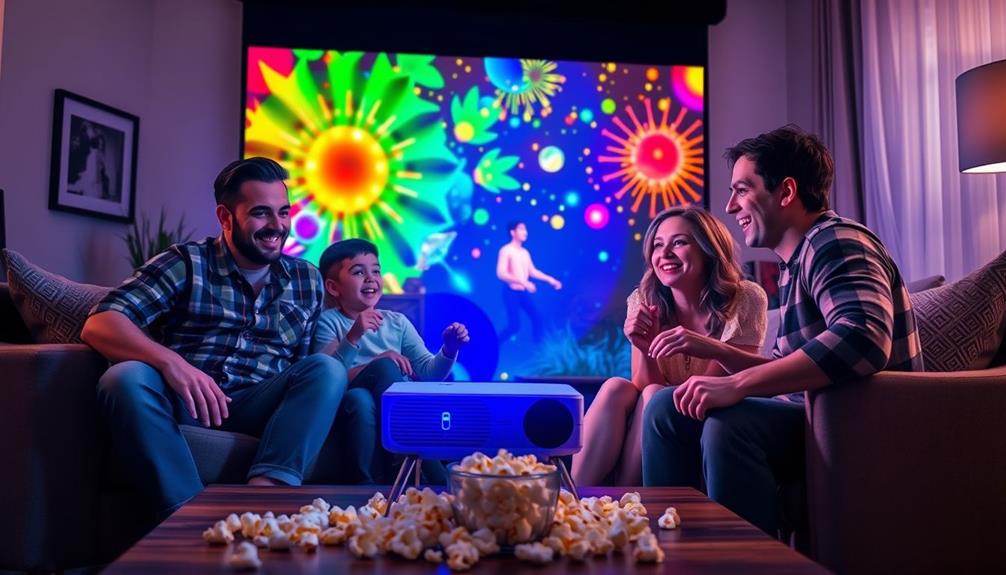
For many home theater enthusiasts, diving into 3D content can be an exhilarating experience that adds a new dimension to movie nights. Users often find that 3D viewing becomes a delightful bonus feature of their projector, even if it wasn't their primary reason for purchase.
Additionally, just as fresh juice like orange juice can enhance your health, quality 3D content can elevate your viewing pleasure to new heights. Here are a few insights from user experiences:
- Quality of Glasses: Higher quality 3D glasses greatly enhance the viewing experience by reducing crosstalk and boosting brightness, making the content more enjoyable.
- Viewing Fatigue: Some users report that extended 3D viewing can lead to fatigue, so it's important to create comfortable viewing conditions to enjoy the immersive experience without strain.
- Personal Preferences: Engagement with 3D content varies widely. While some users indulge frequently, others prefer traditional viewing, showcasing the diverse tastes in home theater setups.
Ultimately, whether you're a dedicated 3D enthusiast or a casual viewer, understanding these user experiences can guide you in making the most of your projector's 3D capabilities.
Technical Considerations
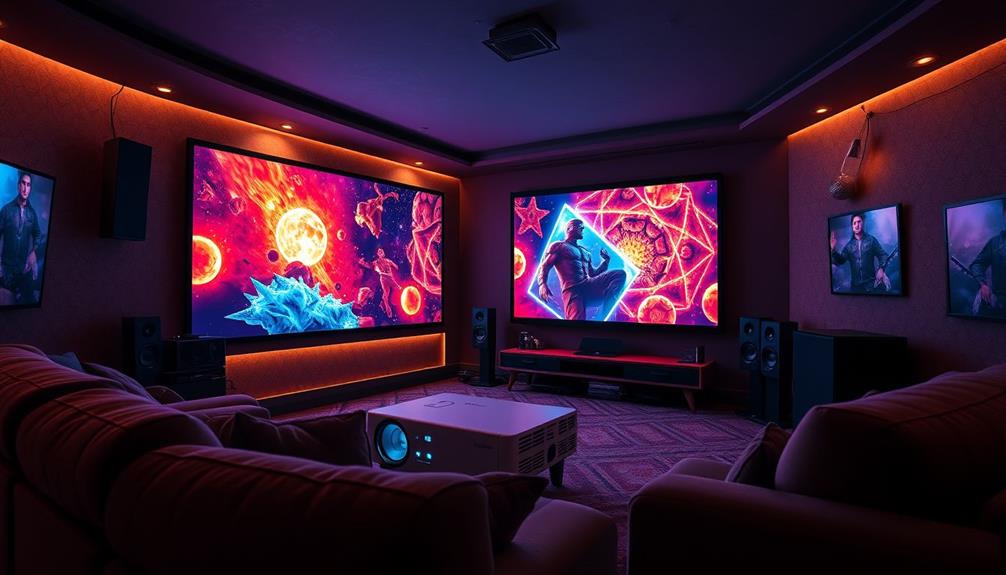
When it comes to enjoying 3D projection at home, understanding the technical considerations is vital for enhancing your viewing experience. One of the primary factors is brightness. Since 3D viewing can consume 50-66% of your projector's available brightness, you'll need to carefully consider your screen size and gain compatibility.
Higher gain screens are often recommended for 3D content, as they improve brightness and enhance your overall viewing experience, especially in larger home theater setups. Additionally, much like the speed of electric bikes, the clarity and vibrancy of 3D images can be affected by the quality of the projector's light output.
You should also pay attention to seating distance; adjusting your position can greatly enhance the immersive quality of 3D projection. Ideal seating allows for better depth perception, making your experience much more enjoyable.
Compatibility with various 3D formats—like frame sequential, side-by-side, and top-and-bottom—is essential, too. Formats like frame packing may require more bandwidth but deliver superior results.
Lastly, don't overlook the importance of proper setup and calibration. A well-calibrated projector reduces issues like crosstalk, which can detract from the 3D experience.
Make sure you've got a projector that supports your preferred 3D content and take these considerations into account to truly elevate your home theater.
Future of 3D Projection
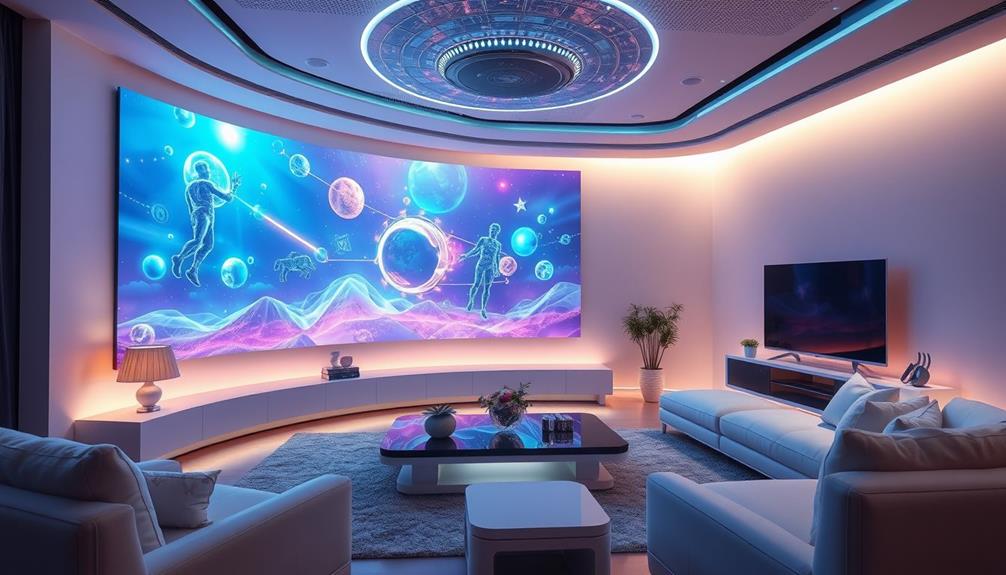
The future of 3D projection looks bright as technology continues to advance, making home viewing more immersive than ever.
Innovations in energy-efficient technologies, such as geothermal energy, are paving the way for enhanced home entertainment systems.
You'll find that demand for new 3D content is on the rise, showing that people are keen to expand their collections.
With improvements in brightness and smart features, the next generation of projectors will likely enhance your home entertainment experience considerably.
Advancements in Technology
Exciting advancements in 3D projection technology are transforming home entertainment. These innovations are making your viewing experience more immersive and vibrant than ever before.
In addition to enhancing visual quality, these developments reflect a broader trend towards diversification of retirement portfolio options in the consumer electronics market.
Here are three key developments to keep an eye on:
- Laser Light Sources: The shift towards laser light sources enhances brightness and color accuracy, ensuring that your 3D projection screen delivers stunning visuals.
- 4K HDR Integration: The combination of 4K HDR technology with 3D projection is elevating visual quality, providing more detail and clarity in the content you love.
- Affordable Options: Future advancements may lead to reduced costs for high-quality 3D projectors, with entry-level models already available starting around $500.
As projector brightness continues to improve, maintaining adequate brightness for 3D viewing becomes essential, as 3D projection requires 50-66% of available brightness.
The growing demand for new 3D Blu-ray titles and enhanced content suggests that home theater enthusiasts remain invested in this technology.
With these advancements, you can expect a more compelling and enjoyable 3D experience in your own living room.
Market Demand Trends
Understanding market demand trends reveals a steady interest in 3D projectors among home theater enthusiasts. With over 100,000 units sold annually in the U.S., this niche segment continues to thrive.
You'll notice a shift toward lower-cost, high-quality models, particularly those priced between $600 and $1,000. This affordability makes 3D projectors more accessible, encouraging more users to explore immersive experiences in their own homes.
Additionally, as individuals increasingly prioritize a healthy lifestyle that includes engaging entertainment options, the appeal of home theater systems grows.
The anticipation for new 3D Blu-ray titles for modern films shows that interest in 3D media collections isn't waning. As filmmakers continue to release engaging content, the demand for 3D projectors is likely to rise.
Additionally, innovations in projector technology, like enhanced brightness and improved color accuracy, are making the 3D viewing experience more appealing than ever.
The growing trend of immersive home entertainment suggests that 3D projection could see a resurgence. As you seek out dynamic content options, 3D projectors may become an essential part of your home theater setup.
Choosing the Right 3D Glasses

When selecting the right 3D glasses for your home setup, it's important to take into account their compatibility with your projector and the viewing experience they offer.
The choice between passive and active glasses can greatly influence your enjoyment of 3D content. Active glasses are often the better option due to their superior image quality and frame synchronization, which is vital for an immersive experience.
Additionally, exploring different email marketing software selection may help you understand the importance of choosing the right tools for effective communication, similar to how the right 3D glasses enhance your viewing experience.
Here are three key factors to think about:
- Compatibility: Confirm the 3D glasses work with your specific projector model. Active glasses typically require synchronization with your projector's infrared signals.
- Image Quality: Look for glasses with a high contrast ratio (ideally between 1,000:1 and 1,500:1) and excellent lens transmittance, which minimizes crosstalk and enhances brightness during projections.
- Comfort: Choose glasses that feel comfortable for extended viewing. Comfort is important, especially during longer movie nights or gaming sessions.
Conclusion
To wrap up, investing in a 3D projector for home use can elevate your viewing experience beyond standard formats. While some might argue that the quality isn't worth the cost, the immersive entertainment and unique experiences it offers—like movie nights or gaming sessions—can be truly rewarding. Plus, with advancements in technology and a growing library of 3D content, you'll find plenty of reasons to enjoy this upgrade. Immerse yourself in a new dimension of entertainment; it's worth it!
Hello, I’m Art, and I’m excited to be a part of the 1Home Theatre Projector team. As a writer, I’m here to contribute my knowledge and insights to help you achieve the ultimate home cinema experience. I understand that making decisions in the world of home entertainment can be complex, and I’m here to simplify the process for you.
